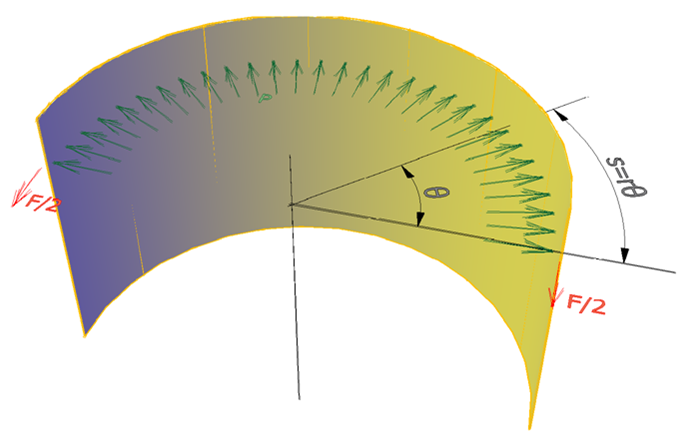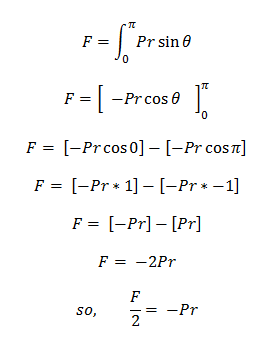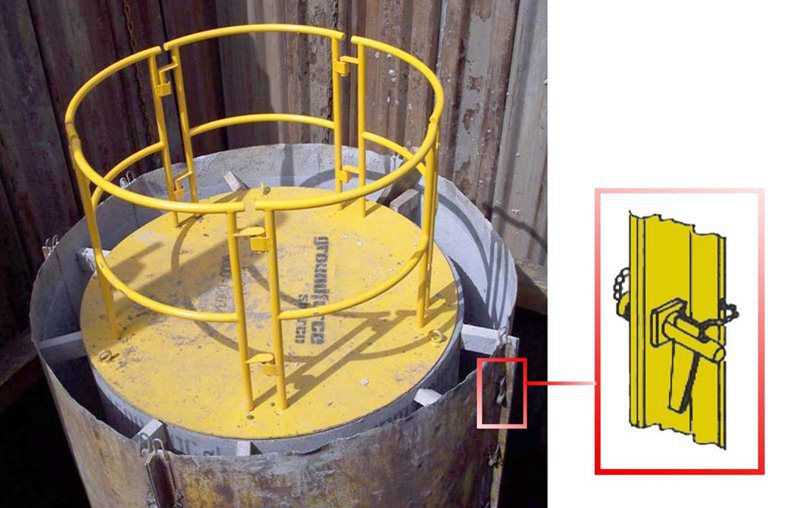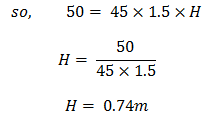After doing such a good job of the last blog while he was away in the middle-east, Tony has handed me the reigns once again to write another technical blog. Following on from an earlier entry about the humble road plate, I thought I’d make a showcase of the often abused, manhole shutter. It may seem like a simple, primitive piece of equipment but even these simple tools have a raft of technical data and calculations to back them.
Considering that the shutter is, for the most part, just a 2mm thick sheet of steel, they are deceptively strong. This is primarily down to the way in which they carry the load from the fresh concrete within. They act in the same manner as an open pipe under pressure and we determine its strength in (almost) exactly the same way that we determine the strength of our hydraulic cylinders.
There exists an old engineers’ rule of thumb that states: “if the thickness of the wall is less than a tenth of the radius (or a twentieth of the diameter), then stresses can be considered equal across the thickness and the whole thing treated as a thin-walled surface”. I think it’s safe to say that a manhole shutter more than satisfies that criteria and this simplifies the whole affair.
The thin-walled assumption lets us use the pleasingly named Young-Laplace equation

And just in case you don’t trust Young or Laplace… I thought I’d show a quick (and slightly cheating) derivation of this equation. First let’s imagine a half cylinder with uniform pressure acting on its internal surface. In order to balance the forces, let’s hold the thing in place with a force at each end of the semi cylinder. You should be imagining something similar to the diagram below:

We know that the vertical restraining force (per unit height), F, must be equal and opposite to the sum of the vertical component of the pressure, P. This can be expressed as a definite integral in terms of the arc length, s, which in turn is related to the angle θ:

This shows that the force per unit height acting to resist the pressure is Pr (the negative sign demonstrating the direction, in this case tension) at any point around the circumference… let’s turn that into a stress by dividing by the thickness and we get the same answer as Young and Laplace.

The manhole shutters are made of 2mm COR-TEN plate, which has a yield strength of 355N/mm2. We can do a bit of rearranging with the algebra and get:

Given that the density of concrete is 25 kN/m3 and the height of a shutter is 1.8m, the worst credible pressure would be 45 kN/m2. Plug that into the equation:

That means the shutter plates are strong enough to take anything up to a 15.7m radius. That’s a pretty big manhole! Of course that’s not the full story. The sheets themselves are by far the strongest components. But to make the shutter convenient for use, they are supplied in various widths of flexible panels and it is the joints between the panels that give you the obvious points of potential failure.
I suppose one might consider designing this joint using a number of bolts along the flange. But this would make the whole assembly prohibitively difficult to use. The installation wouldn’t be so bad; but as concrete gets slopped onto those bolts, it will make them impossible to remove again. So in place of bolts, we have a pin and wedge system shown below:

These joints aren’t nearly as strong as the COR-TEN sheets, so in reality you can only get a diameter of about 2.4m before you need to consider reinforcing the shutter (or reducing the rate at which you fill the concrete, but that just slows us down). The usual way of doing this is to wrap ratchet straps around the shutter to take some of the stress out of the joint. The tension in the ratchet straps can be calculated using a slightly modified Young-Laplace equation; let’s take an example of a 3m diameter shutter:

Let’s say the ratchet straps are good for 5 tonnes (50kN)

So we need a ratchet strap every 740mm. In a 1.8m high shutter, 3 ratchet straps would be enough to entirely take the tension forces are rescue the joints. So you’ll often see straps slung around the outside of manhole shutters, and now you know why. Hopefully you found that interesting and enlightening.
Comments
Blog post currently doesn't have any comments.